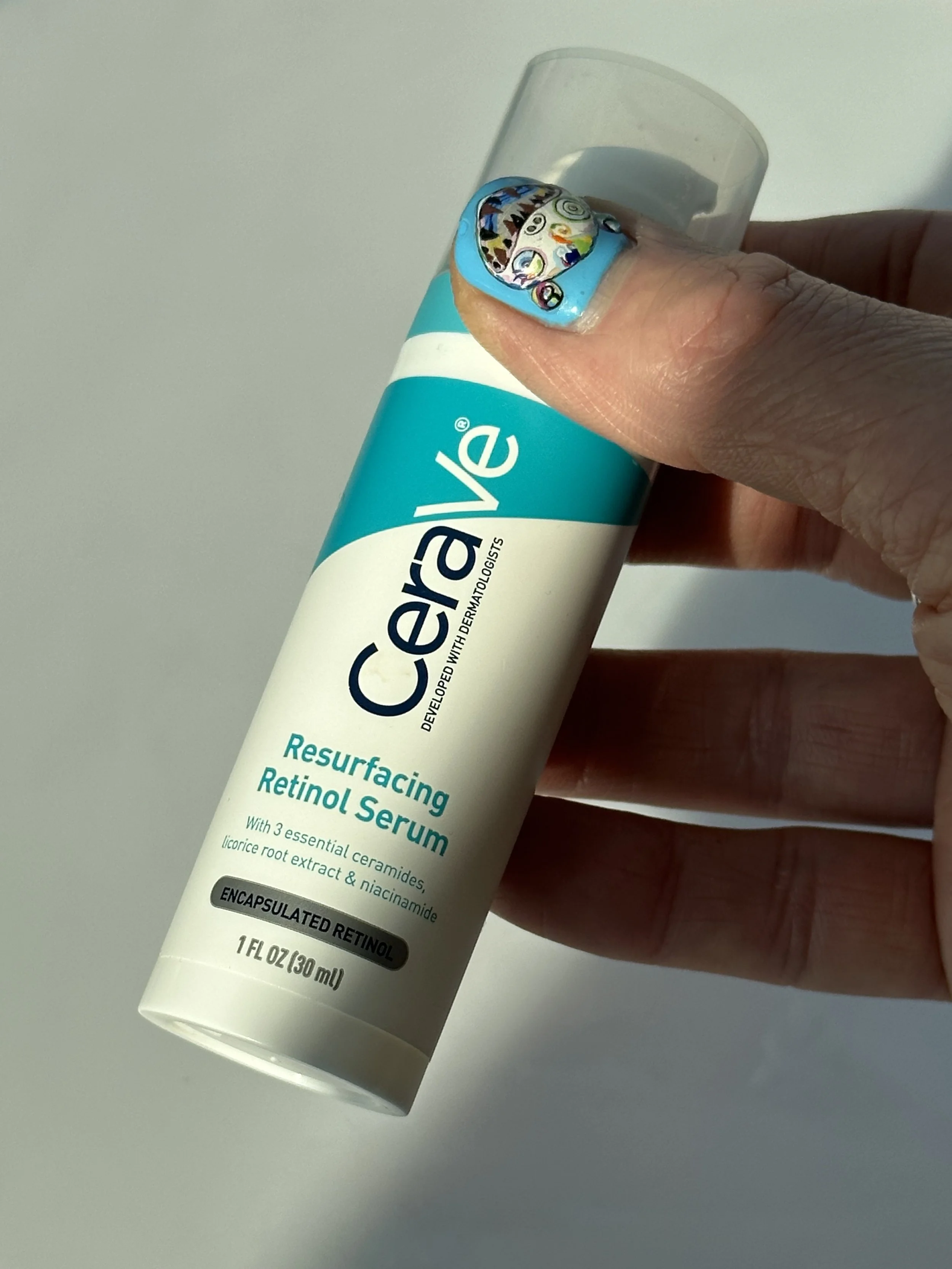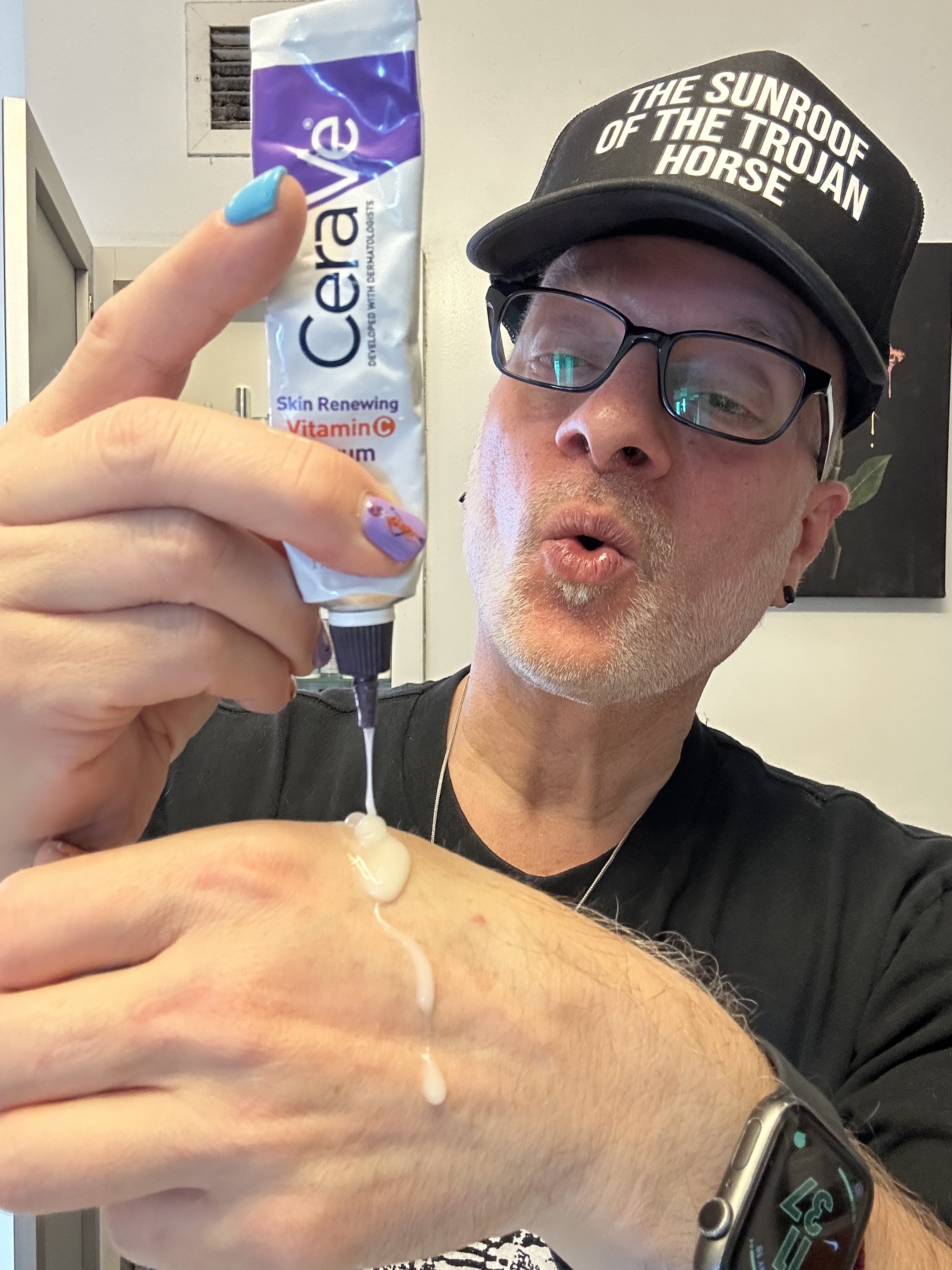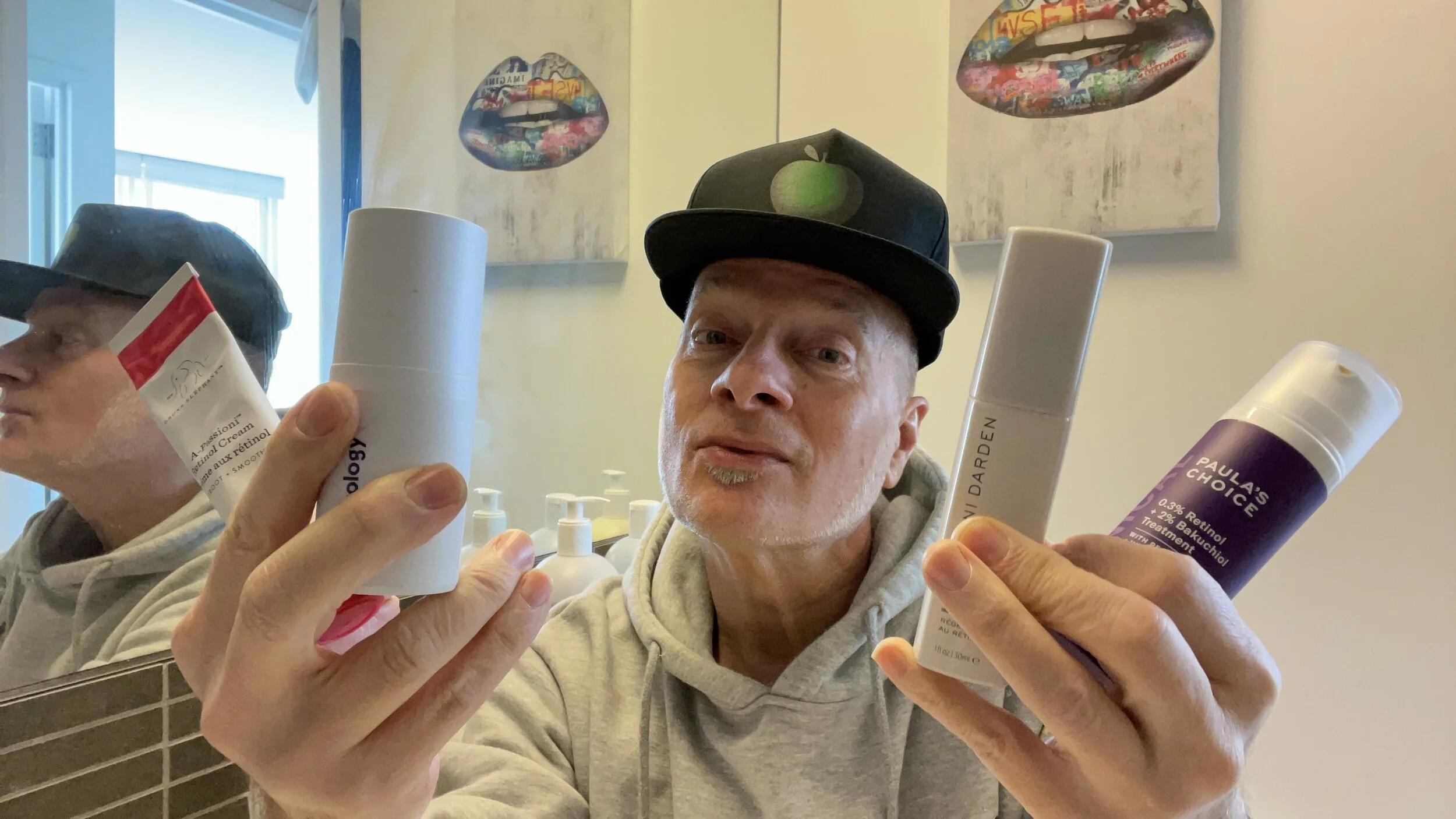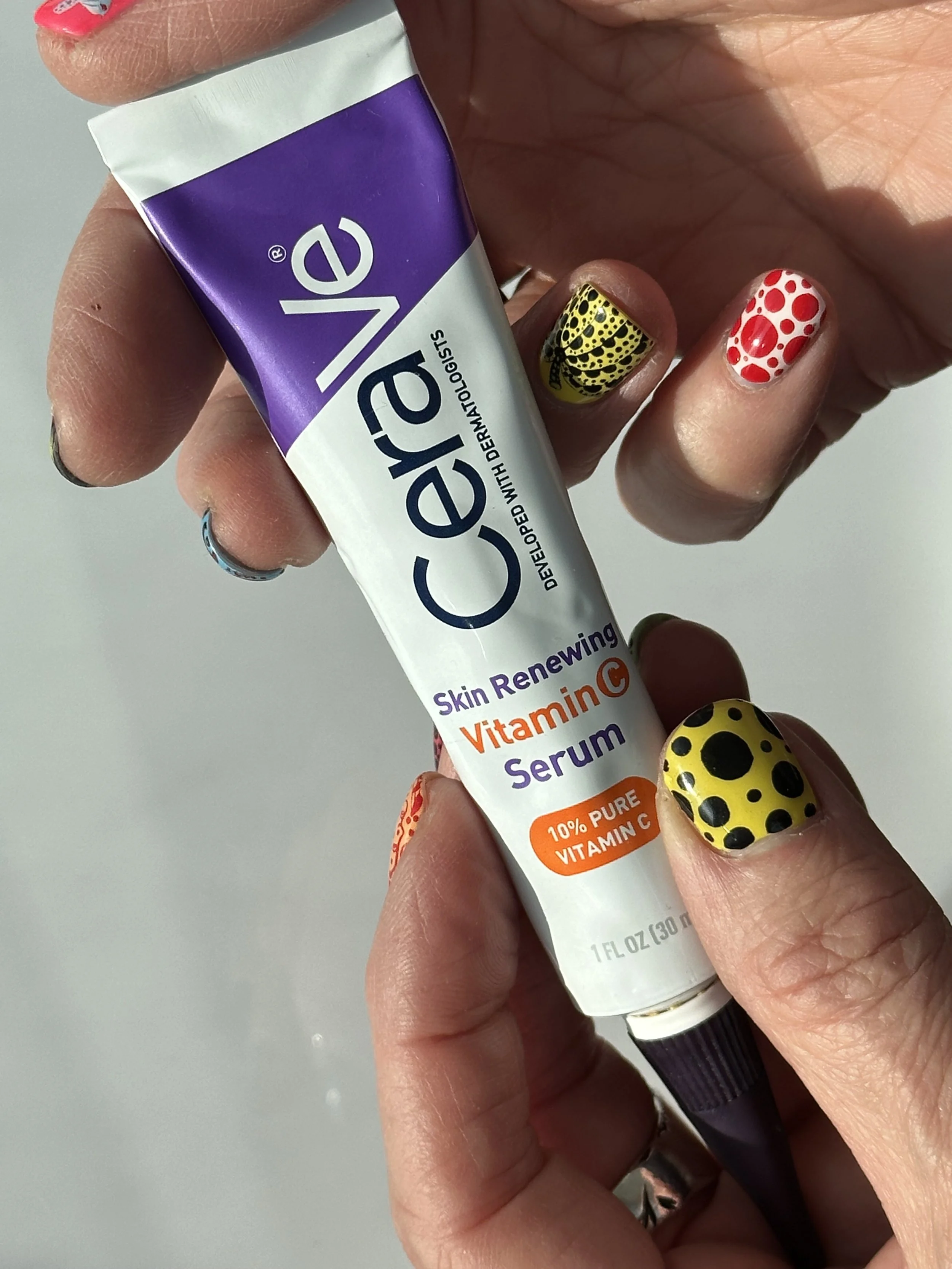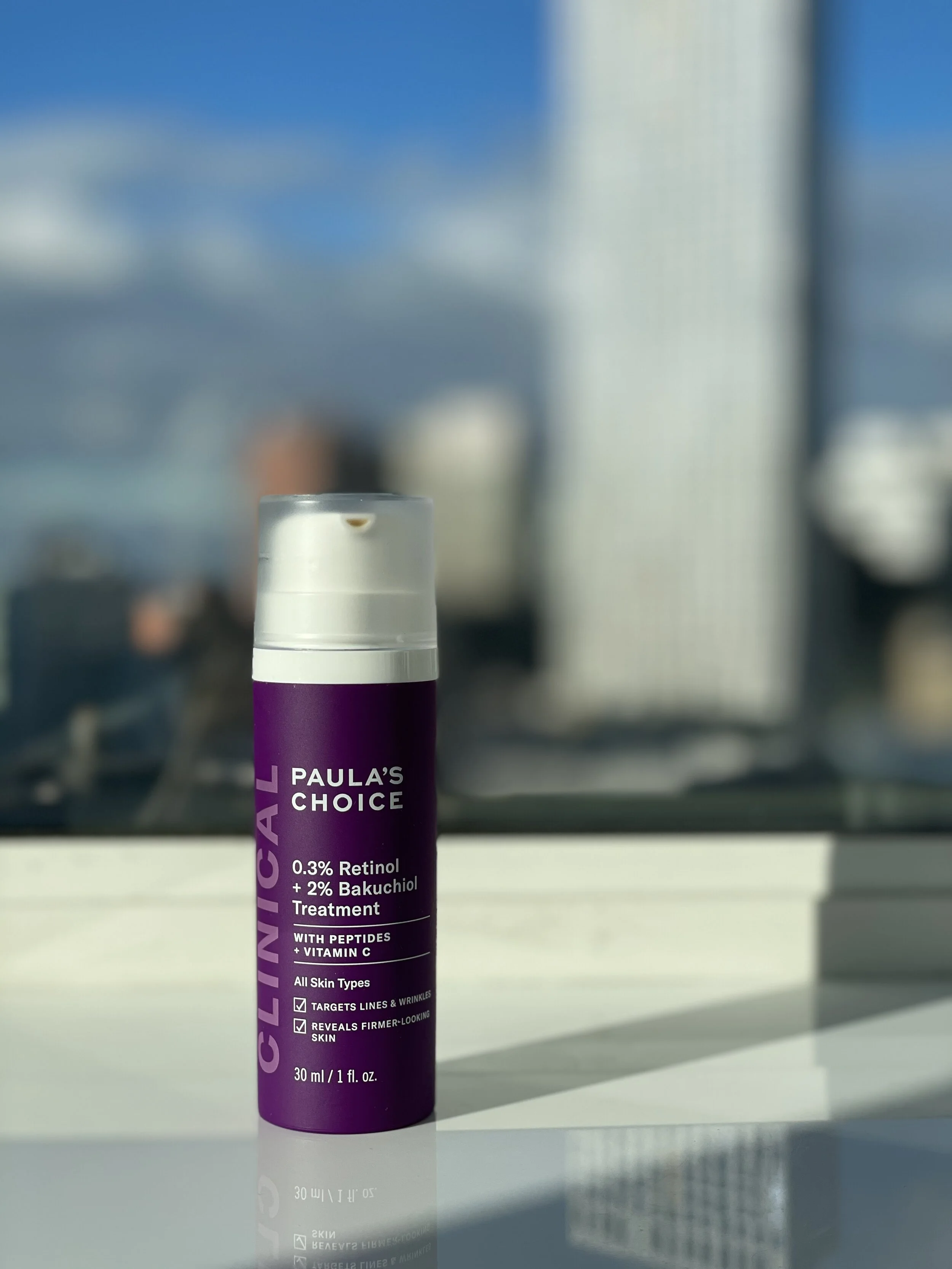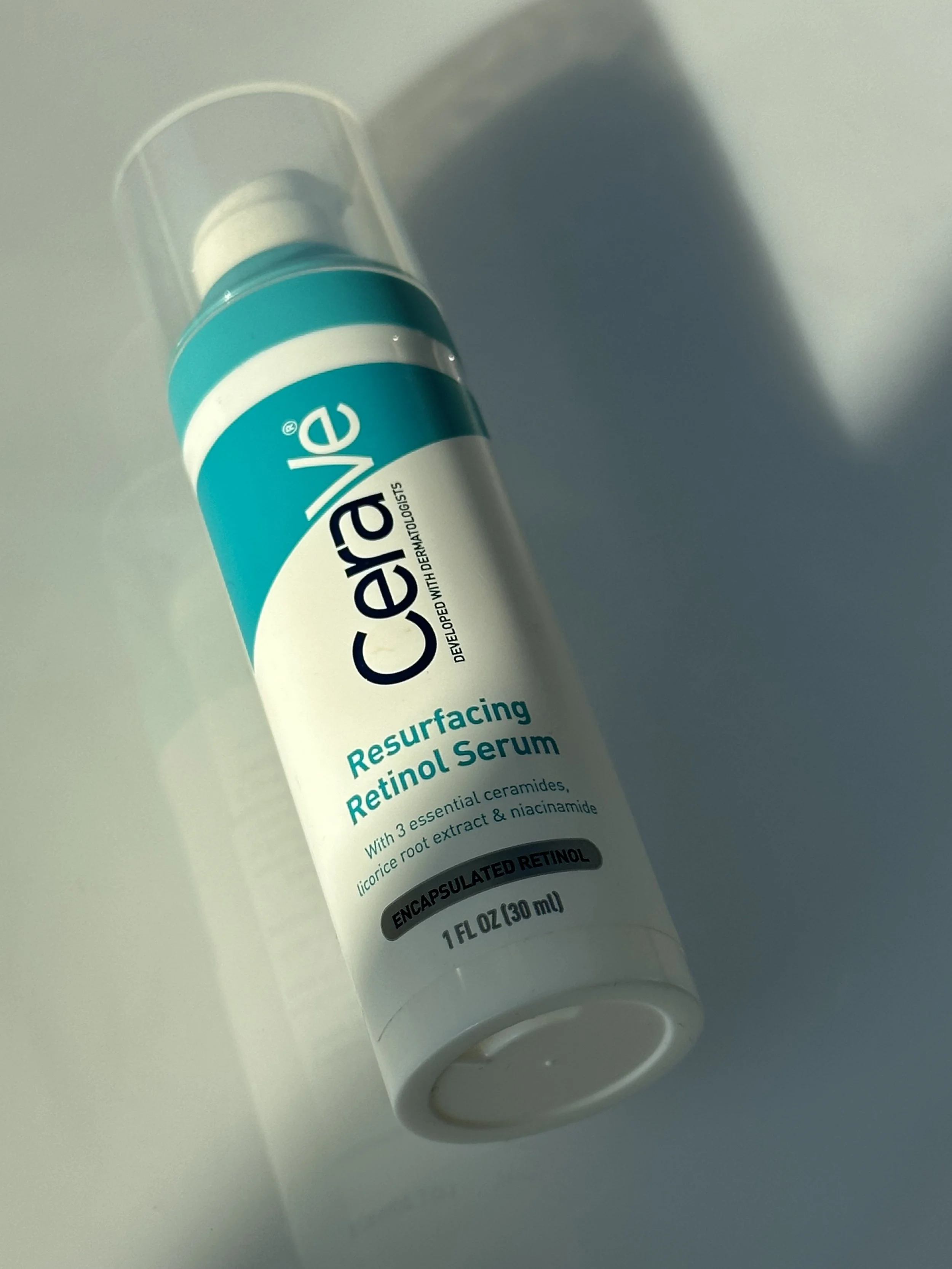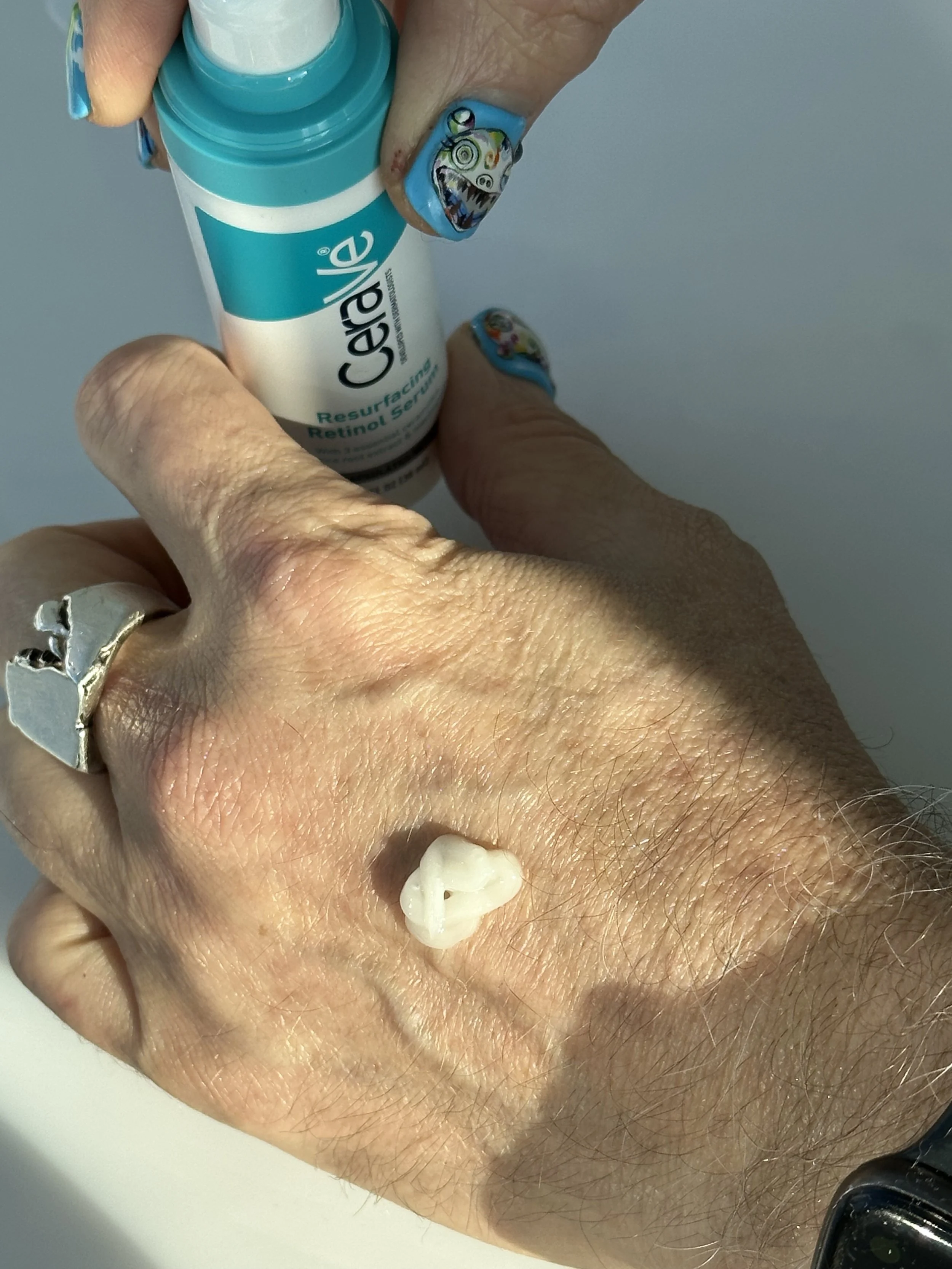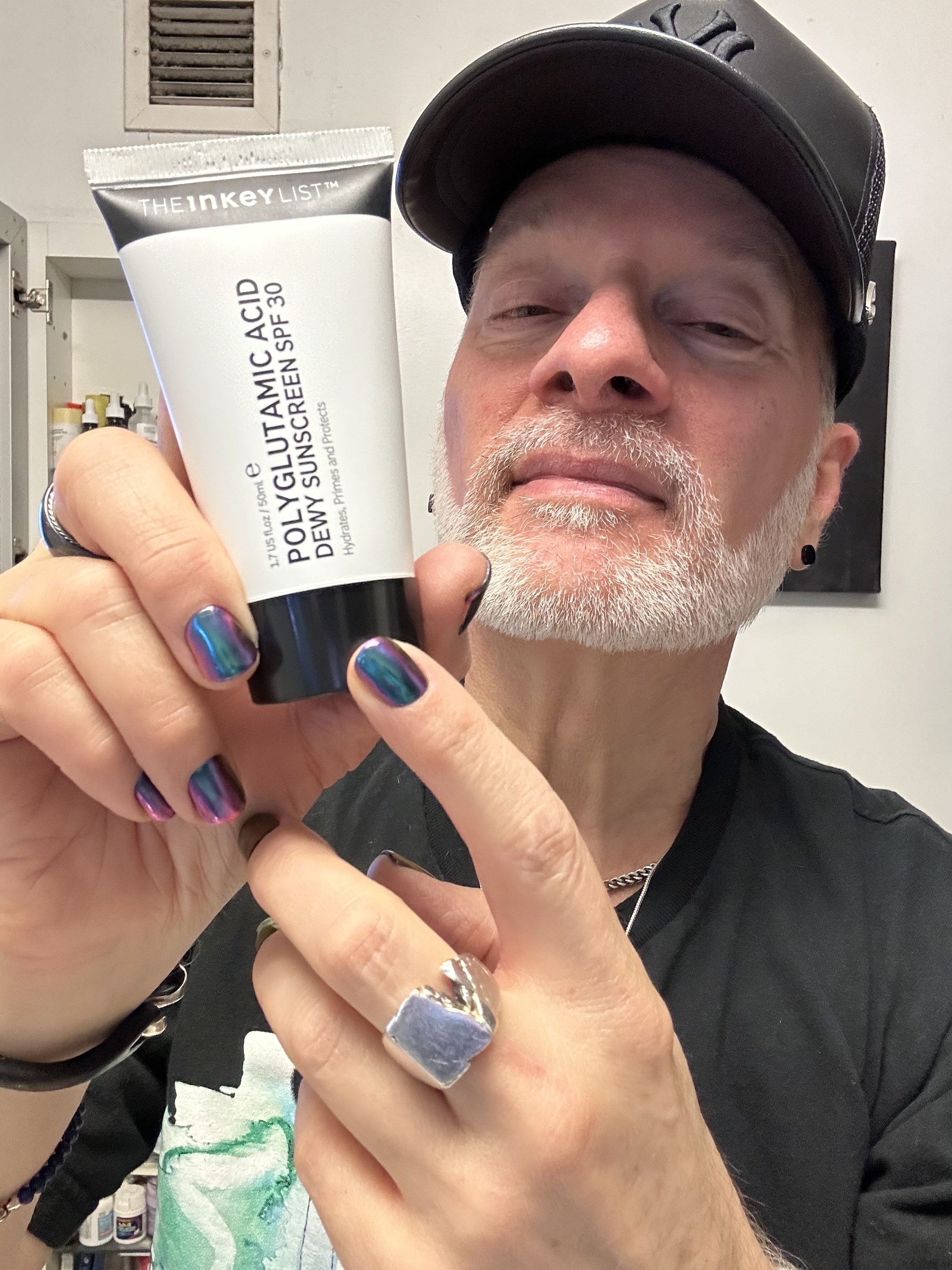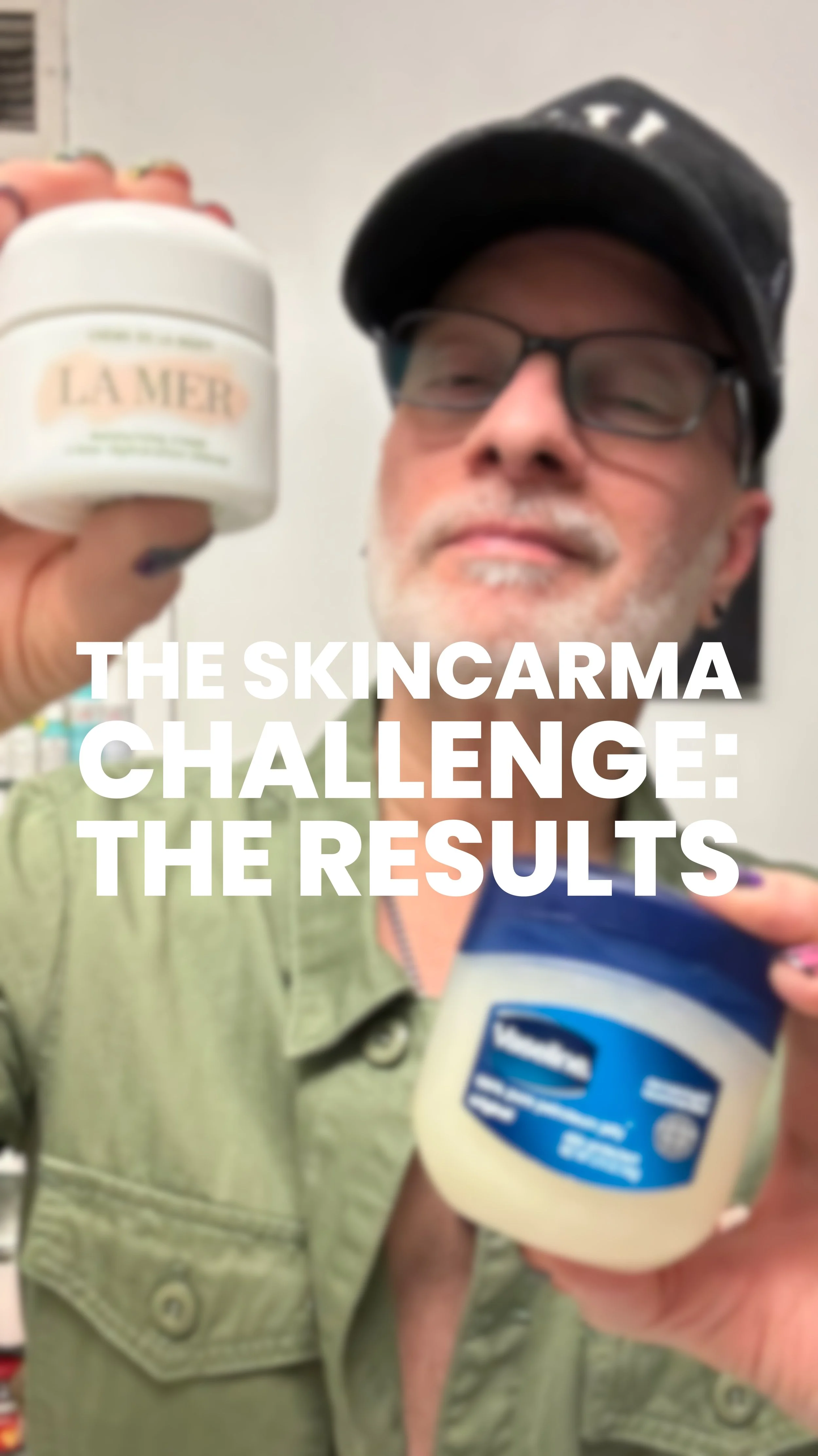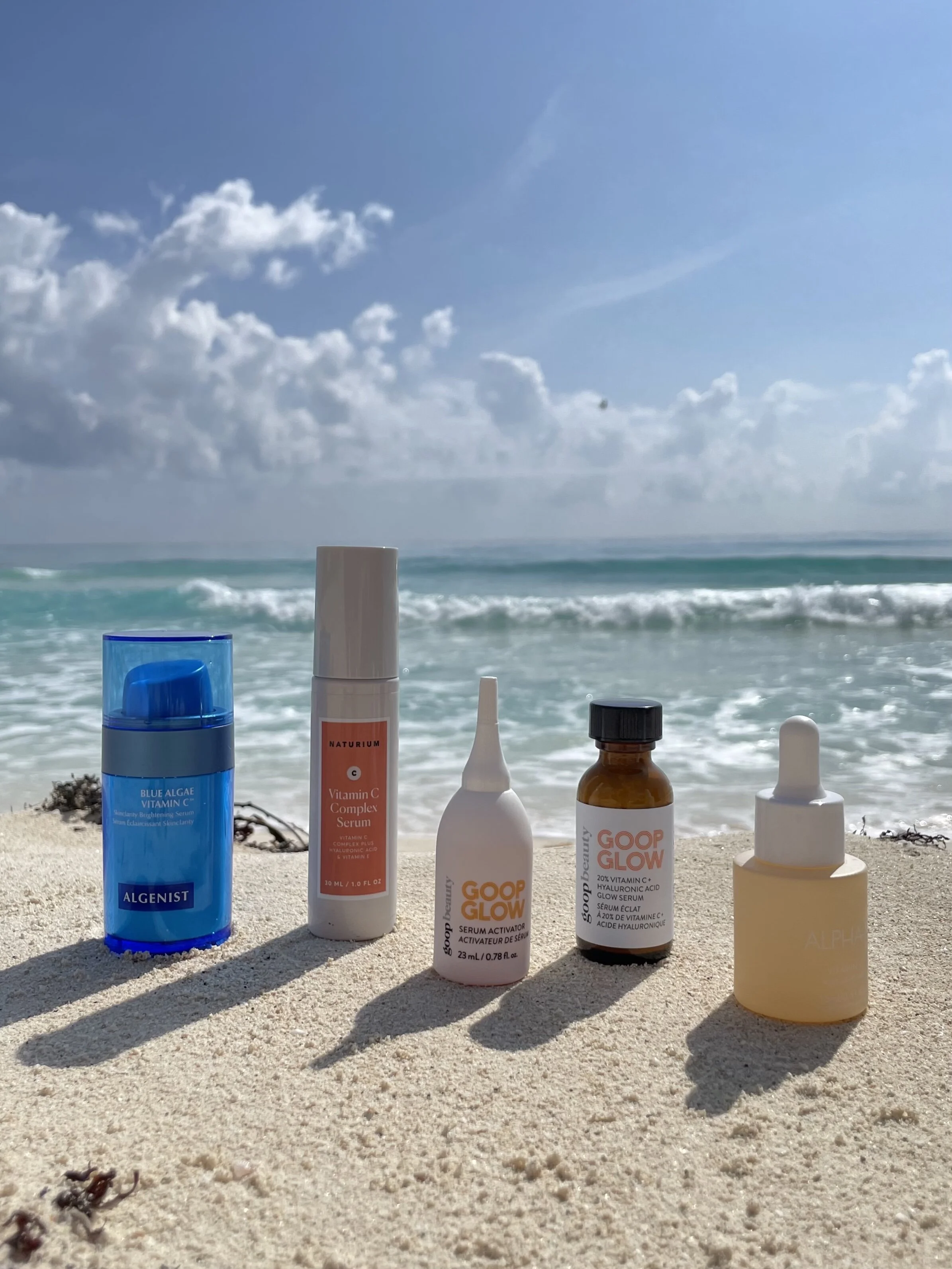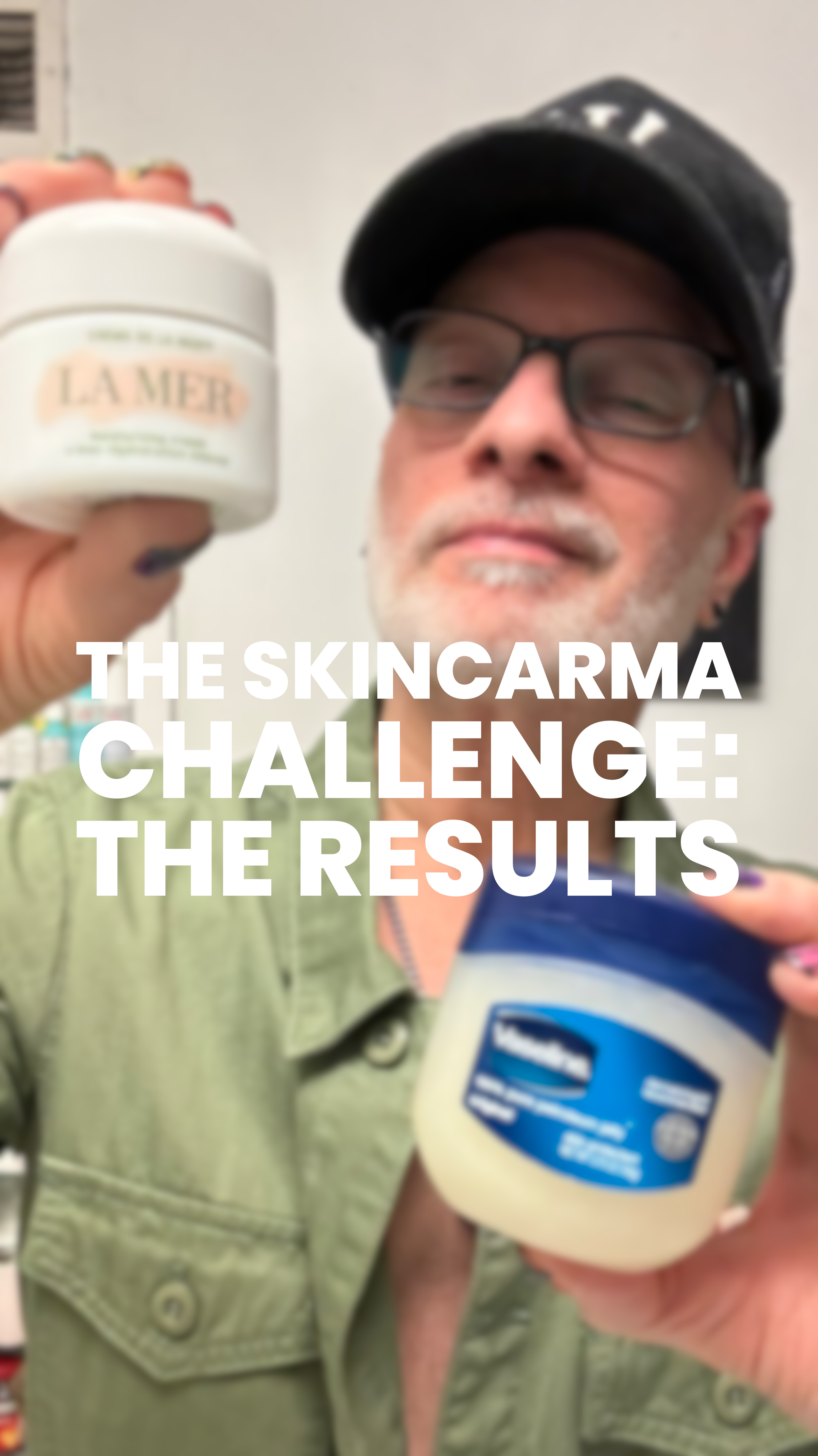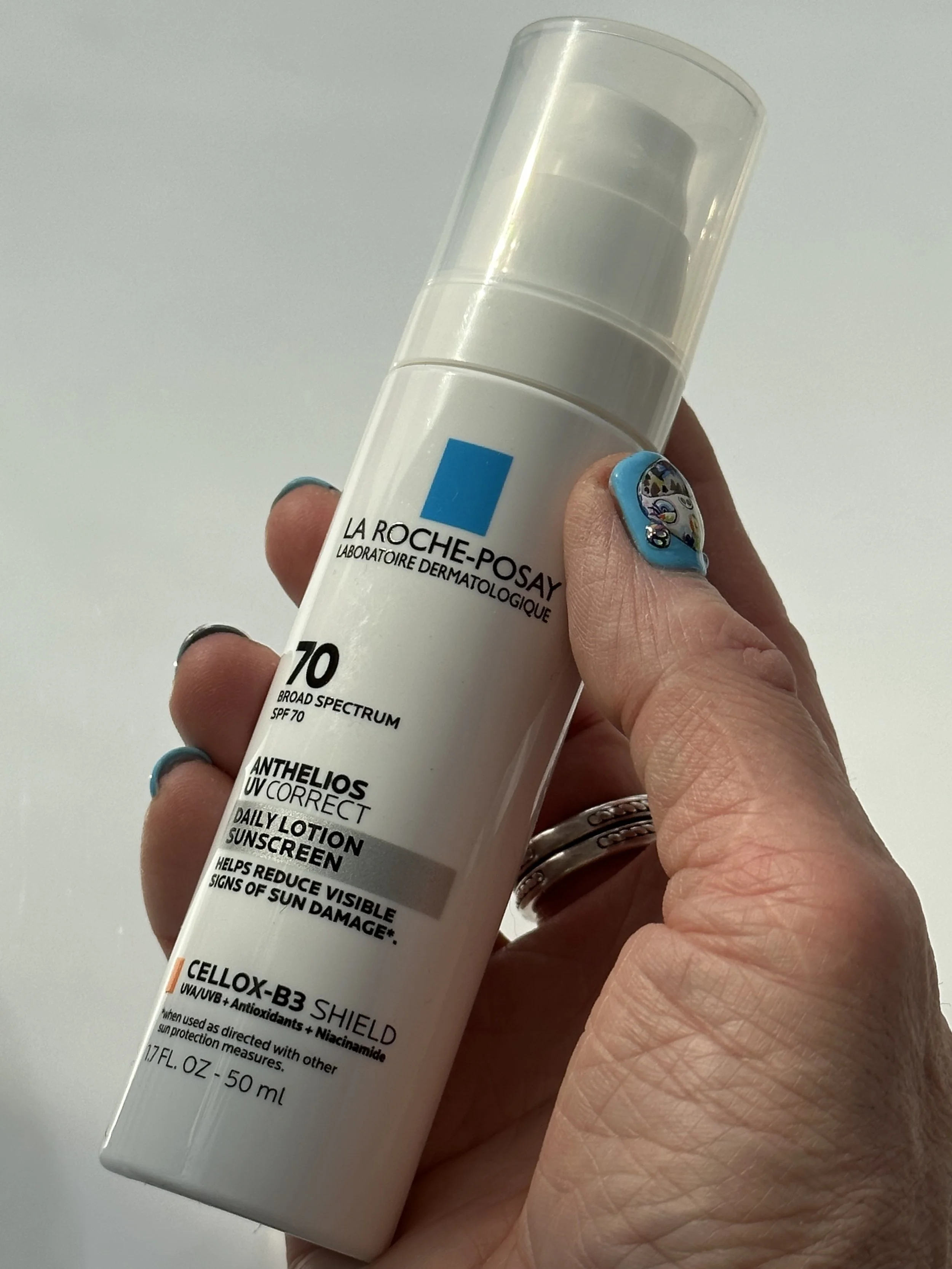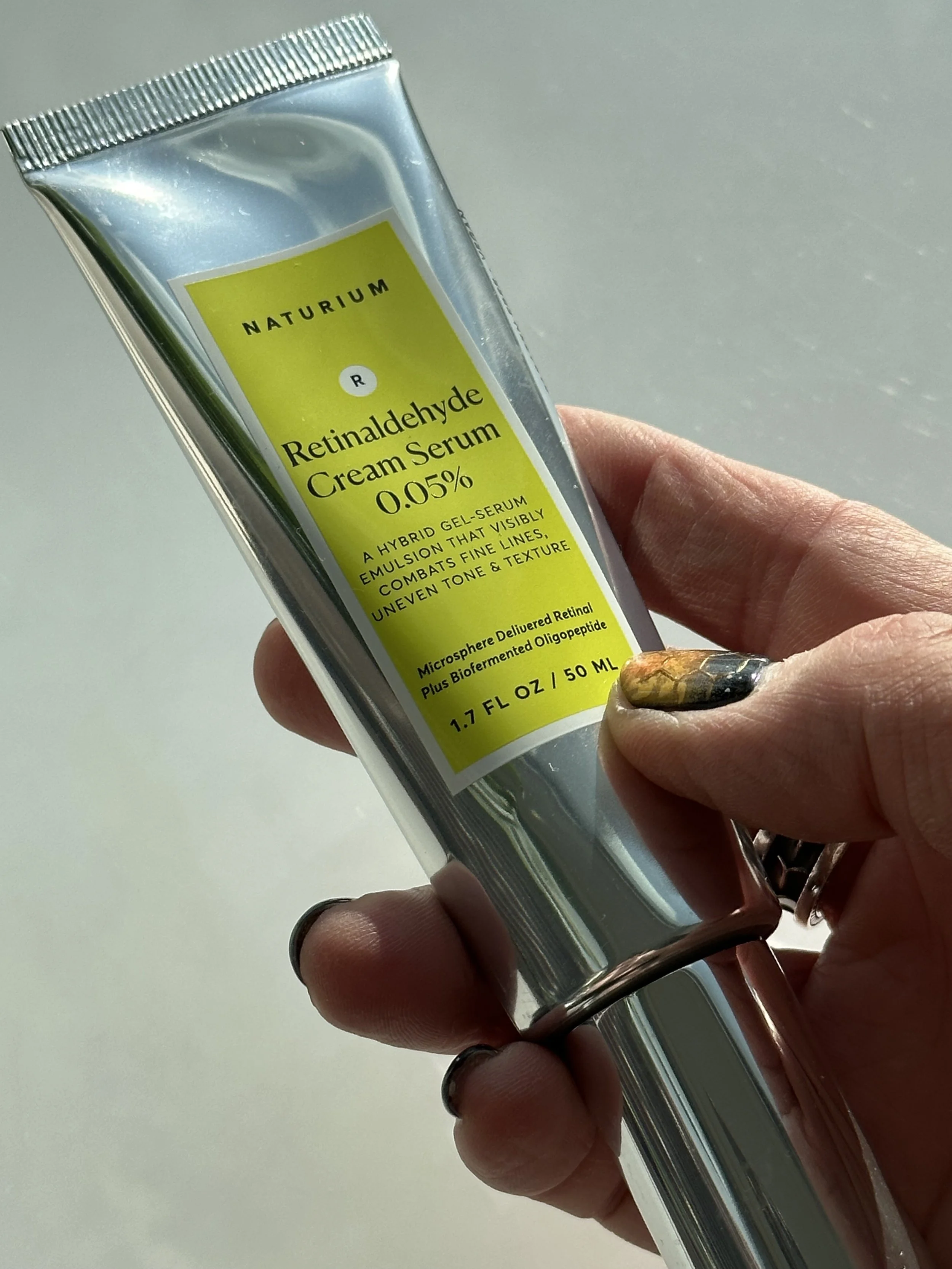PRODUCT REVIEW: CERAVE RESURFACING RETINOL SERUM - What Does Retinol Do to Your Skin? Can I Use Retinol Everyday? Should You Moisturize After Retinol?
CERAVE | RESURFACING RETINOL SERUM
I’ve been immersed in CeraVe for the last several weeks. And while I know the brand is a Gen-Z TikTok sensation and a favorite of people with sensitive skin, it’s been a mixed bag for me.
It seems that I love their legacy face creams with ceramides, as well as the popular face cleansers for sensitive skin – but their newest product innovations are questionable to say the least. CeraVe was acquired by L’Oreal in 2017 and it’s clearly made an imprint on the brand.
My recent CeraVe haul included several of the brand’s bestselling skincare products for sensitive skin. Among the products I’ve been dropping into my regular skincare routine are the brand’s iconic Moisturizing Cream with Ceramides, the Resurfacing Retinol Serum and CeraVe’s Skin Renewing Vitamin C Serum – the most confusing of the dozen products that I’ve tried.
I recently reviewed their weird antioxidant Vitamin C serum and remain perplexed by it. I asked myself, is the CeraVe Skin Renewing Vitamin C Serum really the best Vitamin C serum for sensitive skin? The sensitive-skin lover’s brand would love for you to believe it is. While it has a high 10% concentration of Vitamin C, the Skin Renewing Vitamin C Serum also has a 5% concentration of denatured alcohol – not exactly sensitive to the needs of sensitive skin.
You can catch my full CeraVe Skin Renewing Vitamin C Serum review on the blog here.
So I was experiencing significant trepidation as I began testing out the CeraVe Resurfacing Retinol Serum – a mid-strength Retinol face cream with an estimated 0.3% concentration of anti-aging Retinol.
Best Retinol Face Creams & Serums
Retinol is highly sensitizing on its own, the not paired with denatured alcohol. And after my experience with CeraVe’s alcohol-infused Vitamin C serum, I questioned whether the brand was capable under L’Oreal’s thumb of even making a Retinol face cream for sensitive skin that would minimize irritation and buffer against the many downsides of Retinol.
When it comes to sensitive skin and Retinol, the questions abound.
What’s a good level of Retinol for sensitive skin?
Is 1% Retinol too strong for beginners?
Is 0.2 Retinol good for beginners?
In my experience, a 1% Retinol concentration is certainly too strong for a beginner and likely too high if you’re sensitive. A concentration of 0.25% or 0.3% is a good place to start your Retinol journey – whether your skin is sensitive or not. But you won’t know unless and until you try!
What about CeraVe’s serum? Well, the Skin Renewing Vitamin C Serum is formulated with what’s considered a mid-strength concentration of Retinol at 0.3%. This is similar to many popular Retinol face creams and serums, including my favorite, the Paula’s Choice 0.3% Retinol + 2% Bakuchiol Treatment.
PRODUCT REVIEW: CERAVE SKIN RENEWING VITAMIN C SERUM - What Does Vitamin C Do for Your Skin? Can I Use Vitamin C Everyday?
The Paula’s Choice 0.3% Retinol + 2% Bakuchiol Treatment is the benchmark for me. And while it’s $62 – nearly 3x the price of CeraVe’s $22 Retinol serum – it sets the bar high.
But there’s a lot to appreciate about CeraVe’s addition to the extensive options of wrinkle serums with Retinol. And I’ll get to the pros and cons just below. But before I do, I want to explore a few key questions and concerns we all share about using Retinol – as well as the proven, unrivaled benefits of the anti-aging ingredient.
Among the most common questions people have about Retinol are, What does Retinol do to your skin? and What age should you start using Retinol? I get that last one on my social posts about skincare products with Retinol all the time.
But let’s start at square one. What is Retinol? Well, Retinol is a form of Vitamin A and one of the most effective and scientifically proven anti-aging ingredients used in skincare. It is a molecule in the class of retinoids, and can help improve your skin texture, reduce the appearance of fine lines and wrinkles, and even out skin tone.
PRODUCT REVIEW: PAULA’S CHOICE 0.3% RETINOL + 2% BAKUCHIOL TREATMENT
How does Retinol work? It works its anti-aging magic by promoting cell turnover and increasing collagen production in the skin. And because it performs with drug-like efficiency to repair skin and aggressively treat signs of aging, it can be sensitizing, difficult to tolerate, and complicated to use.
But its worth figuring it out and finding a Retinol face serum that fits your skin concerns and doesn’t exceed your skin’s tolerance level.
Honestly, if you have a concern for wrinkles, fine lines, or any signs of aging, Retinol is among the best anti-aging ingredients; there’s no topical solution that comes close. In fact, Retinol is one of three ingredients that I consider the best anti-aging ingredients. They include antioxidants like Vitamin C, Niacinamide and Resveratrol; UV sun filters like Zinc Oxide and Avobenzone; and, yes, retinoids like Retinol, Retinyl Palmitate and Tretinoin.
According to the experts on the Paula’s Choice research team, Retinol is one of the best ingredients in skincare. Here’s what they have to say:
Retinol (also known as vitamin A) is one of the most effective anti-aging ingredients for softening the appearance of wrinkles, refining skin texture, and improving uneven skin tone.
Research has also clearly shown retinol helps minimize enlarged pores and reignites firmer-feeling skin, which is why we utilize this multitasking ingredient in so many of our Paula’s Choice Skincare formulas.
Low concentrations of retinol (0.01%-0.03%) are great for those new to using retinol who want to introduce the ingredient into their daily routines or anyone with ultra-sensitive, reactive skin. Research has shown that concentrations in this range are effective for delaying signs of aging, minimizing pore size, and improving skin’s healthy appearance.
THIS TEXTURE IS CRAZY AF
1. What Does Retinol Do to Your Skin?
Retinol promotes cell turnover, which can reduce the appearance of fine lines and wrinkles, improve skin texture and skin tone, and reduce the appearance of pores [1]. Retinol can also help improve the appearance of hyperpigmentation and minimize the size and intensity of age spots and dark spots. It can even help prevent the formation of new dark spots and hyperpigmentation [1].
The downsides of Retinol can include skin irritation, redness and sensitivity, especially when first starting to use it, so it is recommended to begin with a low concentration and gradually increase use frequency and concentration over time [2]. And, of course, it is imperative that you wear sunscreen!
Sources: [1] https://www.ncbi.nlm.nih.gov/pmc/articles/PMC2699641/ [2] https://www.aad.org/public/everyday-care/skin-care-secrets/anti-aging/reduce-premature-aging-skin
2. Can I Use Retinol Everyday?
Maybe! It depends on whether your skin can tolerate Retinol every day. Some people can build up enough tolerance to Retinol so that their skin becomes accustomed to everyday use. Others simply can’t. And that’s okay. The objective is to find your balance.
If tolerated by your skin, using Retinol every day can be highly effective for improving skin texture, reducing and preventing the appearance of fine lines and wrinkles, and promoting cell turnover [1]. It is important to start with a low concentration and gradually increase use over time to avoid irritation and sensitivity.
Dermatologists generally recommend starting with a Retinol face cream or serum two to three times per week and increasing gradually over time [2]. You won’t know until you try!
Sources: [1] https://www.ncbi.nlm.nih.gov/pmc/articles/PMC2699641/ [2] https://www.aad.org/public/everyday-care/skin-care-secrets/anti-aging/reduce-premature-aging-skin
3. Should You Moisturize After Retinol?
Yes, a moisturizer is a must after applying Retinol to help minimize skin irritation and dryness, which are common side effects of using Retinol [1]. Using a hydrating face cream can also help lock in moisture and keep your skin hydrated. It’s important for maintaining healthy skin – and for preventing your skin from drying out when using a Retinol face serum or face cream with Retinol.
Check out my top picks of the best face creams for dry skin here.
Sources: [1] https://www.aad.org/public/everyday-care/skin-care-secrets/anti-aging/reduce-premature-aging-skin
4. What Age Should You Start Using a Retinol?
Based on research, it is generally recommended to start using Retinol in your late 20s or early 30s, before the signs of aging become apparent [1]. Are you seeing crow’s feet? It’s time to take skin age prevention more seriously. However, it is important to note that individual results may vary, and it is always best to consult with a dermatologist to determine the best course of action for your specific skin concerns.
No matter your age, you should always wear a daily sunscreen. Then, start with a low or mid-strength Retinol face cream every other day and build your tolerance up for the active. Once your skin has adjusted, you can increase usage and even “graduate” to a stronger Retinol concentration, including a 1% Retinol serum like the Paula’s Choice CLINICAL 1% Retinol Treatment.
Sources: [1] https://www.aad.org/public/everyday-care/skin-care-secrets/anti-aging/reduce-premature-aging-skin
5. Product Review
CeraVe Resurfacing Retinol Serum Review
As I said, I’ve been immersed in CeraVe for the past several weeks. And I finally got around to testing out the brand’s Resurfacing Retinol Serum. My skin is accustomed to Retinol and I can use a high-strength 1% Retinol serum or cream up to three times per week with little to no irritation.
My go to is the Paula’s Choice CLINICAL 1% Retinol Treatment. And there’s more than a bit of irony in that since it was also my first-ever Retinol product. Yes, I started with a 1% Retinol cream as a beginner and it did not go well! It was seven years ago and I had no idea what I was doing. I nearly burned my face off. It was way to strong for my skin, way too early in my Retinol journey.
So I learned my lesson, and learned the hard way how to begin using a Retinol cream for wrinkles: moderation. It took me a while before I dipped my toes back in the Retinol waters again. But when I did, I started with a lower 0.3% concentration and worked my way up.
WHAT DO I THINK OF
CERAVE?
Even today, all these years later, I don’t always want to use a potent Retinol cream in my PM routine. I’m constantly testing out products and I know what my skin can and can’t handle when it comes to powerful actives.
Over the past two weeks, my Retinol of choice has been the CeraVe Resurfacing Retinol Serum. I’ve applied it just about every other night, though I have also tested using it on consecutive nights.
Given my past experience with CeraVe’s Skin Renewing Vitamin C Serum, I have to admit I’ve been pleasantly surprised that the Resurfacing Retinol Serum caused no irritation. That’s despite the fact that it, too, contains denatured alcohol – albeit at a far lower concentration than the brand’s Vitamin C serum. Alcohol appears as ingredient #24 out of 30 on the INCI, lower than the Retinol itself.
The Skin Renewing Vitamin C Serum with 0.3% Retinol also contains actives that help to protect against the dryness that common when using Retinol, particularly for beginners.
As with all CeraVe formulas, the Resurfacing Retinol Serum is formulated with ceramides: Ceramide Np, Ceramide Ap, Ceramide Eop. Ceramides are essential to skin barrier health. What are ceramides and what do ceramides do in skincare?
Ceramides are one of several lipids found naturally in the skin. These lipids, or fats, are your skin’s main moisture control mechanism. Lipids help prevent moisture loss and, specifically, trans-epidermal water loss, or TEWL. The three key skin lipids are: ceramides, fatty acids and cholesterol. Notably, the CeraVe Resurfacing Retinol Serum also contains a small amount of cholesterol.
And perhaps most intriguing is the approximate 2% concentration of the multi-purpose antioxidant vitamin, Niacinamide. Two percent is the level recommended by formulators in order to reap some of the best benefits of Niacinamide, including skin brightening and environmental defense. It’s likely not enough to deliver the added benefits of Niacinamide, like pore-clearing, oil-control and strengthening of the skin barrier.
But it’s nice to have. Paired it with a potent Niacinamide serum like the Paula’s Choice 10% Niacinamide Booster or The Ordinary’s Niacinamide 10% + Zinc 1% and you’ve got a great pro-skin health duo.
Look, the CeraVe Resurfacing Retinol Serum is best thought of as a solid, affordable Retinol product that’s ideal for beginners or those interested in incorporating Retinol into their existing regimen. It has a light, silky texture that’s easily layered into your skincare routine.
Are you wondering, how do I add retinol to my skincare routine? Well, it’s actually easy with CeraVe’s Resurfacing Retinol Serum. In the evening, simply slot it into your serum step – the space in your skincare routine between toning and the application of your moisturizer.
Retinol is best applied on dry skin, so be sure to let your skin dry down after cleansing and toning. Give it a minute or two. For me, I have what I refer to as the ABC step – comprised of a Retinol serum, a Niacinamide serum and a Vitamin C serum. ABC! Depending on the consistency of each, I apply them thinnest to thickest. I usually apply Retinol last of the three.
An average evening skincare routine for me over the last two weeks meant I applied the Paula’s Choice 10% Niacinamide Booster first, then Naturium’s Vitamin C Complex Serum, and last, the CeraVe Resurfacing Retinol Serum. Of course, I sealed it all in with a moisturizer like my fave dry skin savior, the Skinfix Barrier+ Triple Lipid-Peptide Face Cream.
If you’re new to Retinol or want something effective yet affordable, the CeraVe Resurfacing Retinol Serum is a good option.
6. Pros & Cons
What I like about it: The CeraVe Resurfacing Retinol Serum is a solid Retinol face serum with a mid-strength 0.3% concentration of the active. I love the texture and its layer-ability. The $22 price makes it accessible to more people, which is cool.
What I don’t like about it: I wish the brand would remove the alcohol! It’s not good for your skin and is especially problematic for very sensitive skin or skin that’s not accustomed to Retinol. And it’s contrary to CeraVe’s positioning as the go-to brand for sensitive skin types.
Who it’s for: All skin types, except very sensitive.
SHOP THE BLOG: Want to try it for yourself? Purchase the CeraVe Resurfacing Retinol Serum for $21.99 here.
The Ingredient List of the CeraVe Resurfacing Retinol Serum:
 cci|sb|aacne|h, Ammonium Polyacryloyldimethyl Taurate vc, Dipotassium Glycyrrhizate
cci|sb|aacne|h, Ammonium Polyacryloyldimethyl Taurate vc, Dipotassium Glycyrrhizate  so|h, Hydrogenated Lecithin
so|h, Hydrogenated Lecithin  emo|emu, Potassium Phosphate buff, Ceramide NP
emo|emu, Potassium Phosphate buff, Ceramide NP  sii, Ceramide AP
sii, Ceramide AP  sii, Ceramide EOP
sii, Ceramide EOP  sii, Carbomer vc 0 1, Cetearyl Alcohol emo|vc|emu|surf 1 2, Behentrimonium Methosulfate surf, Dimethiconol emo|h, Lecithin
sii, Carbomer vc 0 1, Cetearyl Alcohol emo|vc|emu|surf 1 2, Behentrimonium Methosulfate surf, Dimethiconol emo|h, Lecithin  emo|emu, Sodium Citrate chel|buff, Retinol
emo|emu, Sodium Citrate chel|buff, Retinol  cci, Sodium Hyaluronate
cci, Sodium Hyaluronate  sii|h 0 0, Sodium Lauroyl Lactylate emu, Cholesterol
sii|h 0 0, Sodium Lauroyl Lactylate emu, Cholesterol  sii|emo 0 0, Phenoxyethanol pres, Alcohol
sii|emo 0 0, Phenoxyethanol pres, Alcohol  amic|solv|vc, Isopropyl Myristate emo|perf 3 3-5, Caprylyl Glycol h|emo, Citric Acid buff, Trisodium Ethylenediamine Disuccinate chel, Pentylene Glycol solv|h, Phytosphingosine
amic|solv|vc, Isopropyl Myristate emo|perf 3 3-5, Caprylyl Glycol h|emo, Citric Acid buff, Trisodium Ethylenediamine Disuccinate chel, Pentylene Glycol solv|h, Phytosphingosine  sii|cci|aacne|amic, Xanthan Gum vc, Polysorbate 20 emu|surf 0 0, Ethylhexylglycerin (Code F.Ll. D233672/1) pres
sii|cci|aacne|amic, Xanthan Gum vc, Polysorbate 20 emu|surf 0 0, Ethylhexylglycerin (Code F.Ll. D233672/1) presIS IT REALLY A SCAM?
Find out on my TikTok channel.
MY TOP VITAMIN C PICKS FW21: NEW VITAMIN C SERUMS I’M CRUSHING ON FROM ALGENIST, NATURIUM AND MORE
WATCH MY VIDEO REVIEW
THE BEST NIACINAMIDE SERUMS FOR CLOGGED PORES AND A BRIGHTER COMPLEXION
ON MY YOUTUBE CHANNEL HERE
WATCH MY VIDEO REVIEW OF
SKINCARE HACKS: GLYCOLIC ACID IS THE NATURAL DEODORANT THAT WORKS!
ON MY YOUTUBE CHANNEL HERE
WATCH MY VIDEO REVIEW OF
MY FAVORITE HUMECTANT SERUMS FROM PAULA'S CHOICE, THE INKEY LIST, GHOST DEMOCRACY AND MORE
ON MY YOUTUBE CHANNEL HERE
WATCH MY VIDEO REVIEW
COOL CLEAN FACIAL SUNSCREENS TO KEEP US SAFE AND SMILING IN THE SUN!
ON MY YOUTUBE CHANNEL HERE
WATCH MY VIDEO REVIEW
THE OPULUS BEAUTY LABS RETINOL SYSTEM – THE COOLEST RETINOL INNOVATION I’VE EVER SEEN
ON MY YOUTUBE CHANNEL HERE
WATCH MY VIDEO REVIEW
MY 2021 VITAMIN C PICKS + THE BEST VITAMIN C SERUMS TO BRIGHTEN UP THE COMPLEXION!
ON MY YOUTUBE CHANNEL HERE
WATCH MY VIDEO REVIEW OF
MY WINTER SKIN SAVIOR: SKINFIX BARRIER+ LIPID REPLENISHING SKINCARE
ON MY YOUTUBE CHANNEL HERE
WATCH MY VIDEO REVIEW
A COMPLETE K-BEAUTY ROUTINE WITH THE BEST FACIAL SKINCARE FROM PURITO, COSRX, MISSHA & MORE!
ON MY YOUTUBE CHANNEL HERE
WATCH MY VIDEO REVIEW
THE YEAR’S BEST VITAMIN C SERUMS WITH PAULA'S CHOICE, SUNDAY RILEY, THE INKEY LIST AND MORE!
ON MY YOUTUBE CHANNEL HERE
WATCH MY VIDEO REVIEW OF
A SELFCARE SUNDAY NOT FOR THE FAINT OF HEART – WITH THE PAULA’S CHOICE 25% AHA PEEL!
ON MY YOUTUBE CHANNEL HERE


